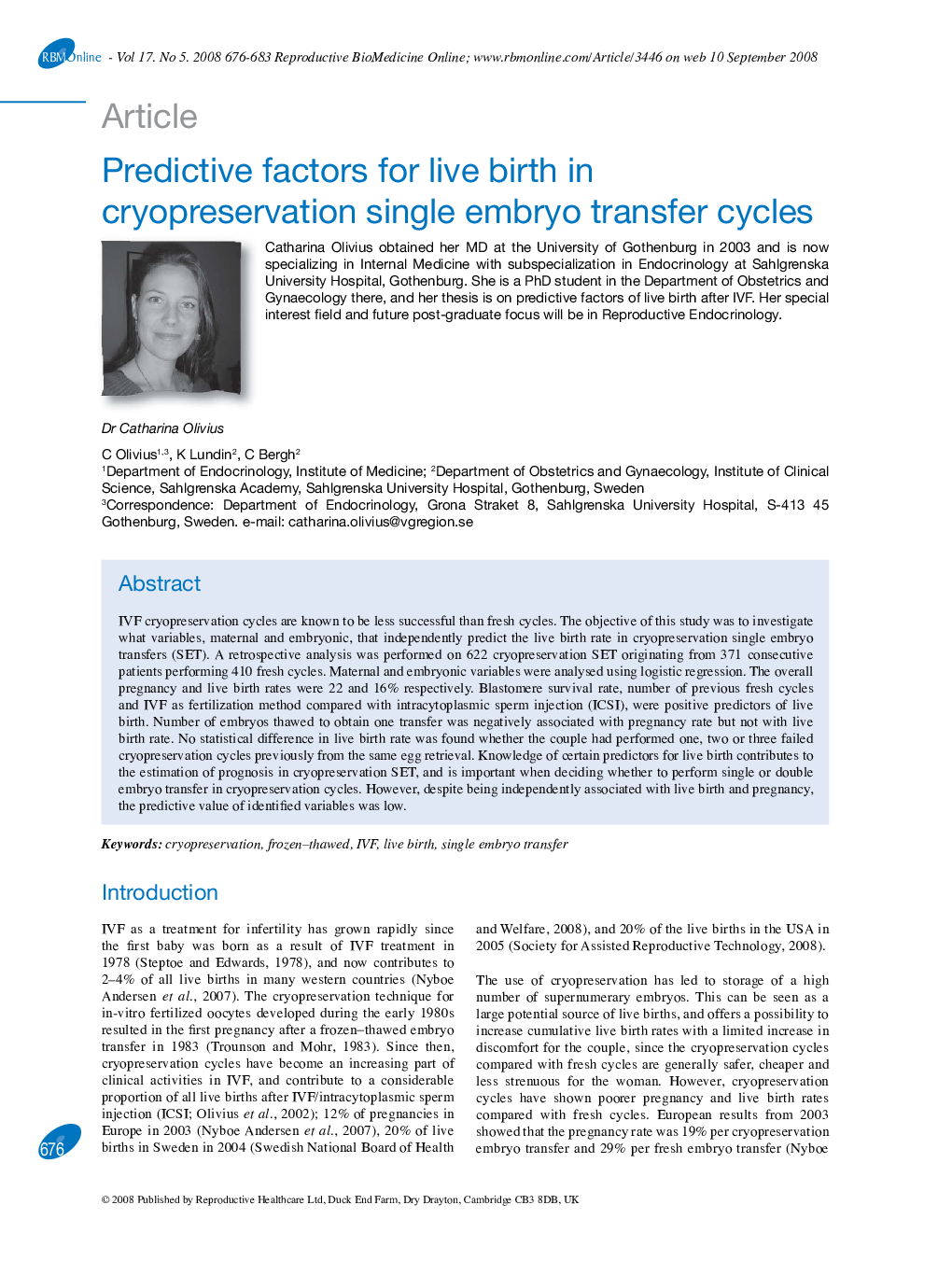| Article ID | Journal | Published Year | Pages | File Type |
|---|---|---|---|---|
| 3972354 | Reproductive BioMedicine Online | 2008 | 8 Pages |
IVF cryopreservation cycles are known to be less successful than fresh cycles. The objective of this study was to investigate what variables, maternal and embryonic, that independently predict the live birth rate in cryopreservation single embryo transfers (SET). A retrospective analysis was performed on 622 cryopreservation SET originating from 371 consecutive patients performing 410 fresh cycles. Maternal and embryonic variables were analysed using logistic regression. The overall pregnancy and live birth rates were 22 and 16% respectively. Blastomere survival rate, number of previous fresh cycles and IVF as fertilization method compared with intracytoplasmic sperm injection (ICSI), were positive predictors of live birth. Number of embryos thawed to obtain one transfer was negatively associated with pregnancy rate but not with live birth rate. No statistical difference in live birth rate was found whether the couple had performed one, two or three failed cryopreservation cycles previously from the same egg retrieval. Knowledge of certain predictors for live birth contributes to the estimation of prognosis in cryopreservation SET, and is important when deciding whether to perform single or double embryo transfer in cryopreservation cycles. However, despite being independently associated with live birth and pregnancy, the predictive value of identified variables was low.
